Popular Education
This tool is intended to provide ideas for identifying the right moments or opportunities to engage people in a popular education process.
When to Engage People
in Popular Education
When is a good time to engage people in a popular education process?
The time is right when there is a group of people interested in coming together to analyze their own situation and identify collective solutions. The popular education process is about people in the community becoming involved in the decision-making process regarding issues that matter to them.
How you can help an organic popular education group organize
1. A popular education practitioner or organization is approached by a group of farmworkers concerned about an issue impacting them and their community.
2. Listen to what the issues are and ask what they believe can be done to resolve them.
3. They want to call a meeting in their community; you work with them to organize the meeting.
4. At the first meeting, allow everyone to introduce themselves and get to know one another. Let those who initiated the meeting lead it and inform people about their concerns.
5. If you or your organization are acting as facilitator, remember that you are there to make sure all attendees participate in the meeting. Your role is one of active observer and listener who can identify the group’s readiness to work together and solve the issues impacting them. If they appear ready, then you have a great opportunity to start a popular education process.
Starting a popular education process with multi-ethnic groups
1. One of the central goals of your popular education organization or group should be to increase leadership opportunities for immigrant women and to build interethnic relationships.
2. Identify women from each of the communities you would like to bring together. These women must be invested and active in their communities and have established relationships and community trust. Your goals for the group have to be relevant to them.
3. Convene a meeting to share goals, ideas and design strategies. Discuss how to attract other women from the community to join the group and engage them in a popular education process.
4. You will accompany the women in the process lead by them until they are ready to move forward by themselves.
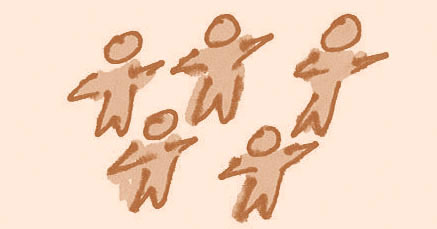

• Consciousness building
We believe that through collective and individual learnings, we can transform ourselves and our communities.
• This process only works if there is some action that needs to take place.
• Popular education is a process; not training courses or workshops
• Popular education can occur organically
• The process is more effective if there are popular education practitioners or organizations to support it
• Meetings can take place anywhere
• The decision to organize around an issue should be made by the group, not by an individual

• PVI Ground Values
• Popular Education Facilitator Tool
• How to Facilitate the Popular Education Process Tool
“Believe in people, not in institutions.”
Miles Horton
Who to Engage in the Popular Education
Process
The popular education process is not ideal for everyone; however, there are popular education techniques that can be implemented with diverse groups of people to achieve different goals, such us facilitating a participatory meeting, or building more democratic learning spaces and relationships. Considering that popular education is a consciousness- building process, it’s important to be strategic as to whom to engage in this process. This tool was designed to help you better understand the people at the center of this process.
Who should engage in popular education?
Ideal candidates for the popular education process are those who work well with others, have a willingness to share what they learn and a passion to spur their community into action. Popular education is a process in which priority is given to poor, oppressed and marginalized people. It’s facilitated by a person whose purpose is to help a group or groups of people change a condition of oppression.
Examples of popular education at PVI
We work with the poor, minorities, immigrants and refugees to help them make a difference within their own communities. We approach people who seem to want to take advantage of the opportunity to be agents of change. Our select groups of people are already ‘in action,’ believing they can benefit from coming together to learn from one another and produce results.
A popular education success story
Two farmworkers heard about a number of racially motivated traffic stops by law enforcement in a rural community. They approached a mayordomo with access to indigenous farmworkers who confirmed that he’d heard the same story of farmworkers experiencing frequent traffic stops. He expressed a willingness to help, which led to a search for people who had experienced these arbitrary stops and wanted to come together and organize for change. They sought out organizations to support them who helped document the number of stops farmworkers experienced on their way to and from work. After producing evidence of a pattern, they called a news conference. After the situation went public, the situation changed for the better. Those who had taken action not only felt empowered, but learned that by working together to take action, they could be agents of change in situations of abuse and exploitation.
“The single individual may have an impact upon society, through genius or derangement, but positive and enduring impact comes from the people working in a unified manner toward common goals.”
Miles Horton


Principles
• Form groups of people who will work collectively to share experiences and encourage participation
• Success relies on the same group of people going through the process together
• Participants must be interested in collective learning, engaging others and forming groups of like-minded people

Tips
• Work with people who are genuinely concerned for a community issue, not those looking to solve a personal problem
• Engage those who are committed to bringing about social change
• The purpose is not to build self-esteem, personal development or individual leadership, although these characteristics can result through participation

References
• The Theory Behind Our Work booklet
• Practicing Popular Education with Indigenous Mexicans Tool
• Practicing Popular Education with Youth Tool
• Practicing Popular Education with Mixed Status Families Tool
Practicing Popular Education with Indigenous Mexicans
Through the Pan Valley Institute’s popular education practices with diverse groups of people, we have validated the importance of focusing on principles and philosophy rather than techniques. We have learned that each group brings different cultural protocols, social organizing practices, histories and needs. In this tool, we share principles, cultural protocols and approaches important to consider when working with indigenous people.
Mixteco, Zapoteco
• Anyone entering into a relationship with an indigenous group has to be sensitive, open, and willing to understand and learn how to work with a community with a long history of discrimination.
• Trust is key when working with an indigenous community. Find people who are willing to talk to you and introduce you to others in the community.
• Give value to indigenous peoples’ knowledge, social organizing traditions and practices like usos y costumbres 1 (indigenous ways and customs) such as the tequio. 2
• Value peoples’ knowledge and show them they have skills and talents to contribute. Do not limit indigenous people to what you think they can or cannot do.
• People are at different levels in terms of sharing about themselves and their culture; be respectful and do not force them to share what you think they should share.
• Don’t come with assumptions and start labeling people based on your own biases. Set your personal biases aside.
• People are more likely to get involved if the activity is relevant to them, such as La Fiesta del Pueblo.
• Make sure to provide comfortable spaces where participants feel safe to share who they are. Approaching people through food is always a good idea.
• Be patient. Farmworkers in indigenous communities are constantly moving, migrating and working long work hours with changing schedules.
• Be mindful that language and literacy may be a barrier. People get discouraged if you don’t consider that they may not know how to read or write.
1 Usos y Costumbres (indigenous ways and customs) is set of community institutions and practices designed to maintain the main civic, religious and political pillars of indigenous communities in Mexico. Part of these institutions are the cargo system, tequio and the Comite de Bienes Communales (Committee of Community Territory). This practice allows for a great degree of autonomy within indigenous communities from the state and federal governments since in communities governed by usos y costumbres, mainstream political parties do not participate in local elections.
2 Tequio is voluntary community work that all adult members of an indigenous community in Oaxaca have to perform; men and women play different roles. Usually, this work is related to the maintenance of community infrastructure (roads, community buildings, water sheds, schools, etc.). In some places, tequio is compulsory to maintain good standing in the community.


Principles
• Priority should be given to the poor, oppressed and marginalized
• The goal is to accompany these groups through the process of reaching a deep understanding of their power to change their conditions of oppression
• This process values knowledge and the experiences of all people

Tips
• See list of tips indicated in the tool

References
• The Theory Behind our Work booklet
• Decolonization Tool
• The Importance of Decolonization Tool
• When to Engage People in Popular Education Tool
Practicing Popular Education with Youth
The Pan Valley Institute’s popular education practices have been not only interethnic, but also multi-generational; youth have been involved in most of our projects and work. This tool contains generational and cultural protocols we have learned to consider when working with farmworker youth and 1.5 and second generation youth.
• Learn about the cultural family relations between elders and youth in different ethnic groups
• Understand that immigrant youth come from different experiences that influence the way they get engage, as well as their contribution to the process
• Provide structure, yet allow space for creativity and spontaneity
• Youth have a different level of connectedness to society than their parents; while this can be positive, it can also create conflictive generation gaps
• Understand that youth, especially those are 1.5 generation, have a dual sense of belonging; they still care about what happens in their home country as much as in their new country
• When working with farmworker youth, be mindful of the time in which they can be involved due to their work and migration schedules
• Patience is important when doing projects with farmworker youth as many will show up late, miss a meeting, or be late on assignments; don’t give up on them
• When possible, provide resources like a stipend; it makes a difference to farmworker youth that are living paycheck to paycheck
• Sometimes small groups will form within the large group; allow space for these groups to evolve outside the main group
• Take the projects to their communities as it eliminates transportation challenges and allows them to remain in an environment they are familiar with
• Provide opportunities relevant to youth that relate to their identity and heritage
• Understand that migrant youth may have grown up in families who raised them to feel ashamed of who they are; this can have an impact on their level of interest and involvement
• Be patient and flexible, ready to listen and open to new ideas; avoid rigidity
• Provide safe spaces that foster creativity and comfort in sharing
• Good communication is key; use various channels like texts, email, phone calls and personal visits
• Youth like to have things to do; give them assignments
• Assign roles and responsibilities that create a sense of belonging and purpose
• If you are a facilitator, listen more than you speak in order to create a more democratic space, allow time for participation and promote group discussion
• Be persistent; keep trying when participants tell you no
• Providing food is always a good idea; young people are always hungry
• Provide different venues and materials to allow participants to express ideas in different ways like writing, drawing, storytelling, etc.
• Have a language inclusive space
• In terms of group dynamics, always allow time for participants to get to know one other and promote meeting people outside of those they already know
• Be mindful of the “weather” in people, offering empathy for the struggles they may have faced in order to join you and considering what they may be carrying from home, school or work


Principles
• Start with peoples’ experiences Value what every person brings to the table
• Encourage people to work collectively
• Provide a safe and welcoming space

Tips
• See list of tips indicated in the tool

References
• The Theory Behind our Work booklet
• Decolonization Tool
• The Importance of Decolonization Tool
• When to Engage People in Popular Education Tool
• Building a Sense of Belonging Tool
• Strategies for Tackling Racism and Discrimination Tool
Practicing Popular Education with Mixed Status Families
When working with immigrants, we have come to learn of many diversities within this population. It is not only about ethnic, cultural and gender diversities, but also the diversities related to legal status, whether that be immigrant, refugee, resident, undocumented or naturalized. Whatever their legal status, it influences how people relate in social contexts, but it also has a huge effect on families whose members have mixed migration status.
• Even though family is family, mixed migration status can result in documented family members being unsupportive of those who are undocumented
• Those who are documented may have feelings of apathy toward those who aren’t
• Those who are here legally may not see undocumented people as equals
• The mindset of those with undocumented status is different from those with documented status
• There can be psychological implications within the family based on whether children are documented as that impacts their ability to pursue higher education
• If the father in the family has documents but the rest of the family does not, it can influence whether or not the rest of the family will get involved in advocating for the rights of the undocumented
The story of a mixed status family
In the 1980s, the father of a Mixteco family migrated to the U.S. and was able to obtain permanent residency through the Immigration Reform and Control Act (IRCA). As a permanent resident, he was able to submit an application on behalf of his entire family. However, because his eldest son didn’t meet the age requirement, he would have had to wait more than 20 years to become a resident; a caveat that didn’t apply to his younger children, who would be able to obtain residency much quicker. A lack of understanding of the policy and its accompanying limitations created conflict within the family. The eldest son felt resentment towards his father and siblings, and the younger children felt guilty about their lives moving forward while their brother was left behind.
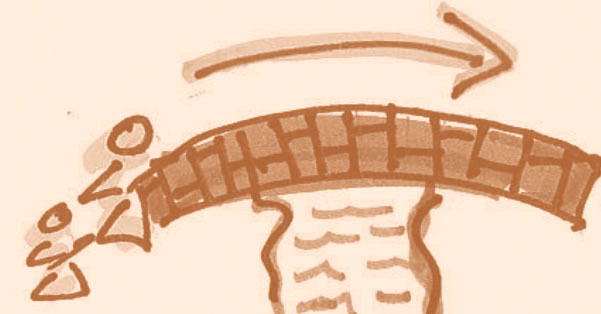

Principles
• Start from peoples’ life experiences and connect them to their current context: where they live, their history and culture, their world vision and perception of change

Tips
• Be mindful with the narrative of referring to immigrants as successes, victims or criminals in regards to their status, as this can create tension within families

References
• The Theory Behind Our Work booklet
How to Facilitate the Popular Education Process
This tool offers basic steps for facilitating the popular education process.
• Assign a facilitator who ensures the study happens
• Information is discovered by personal experience, not by doling out expert research
• The learning has to be relevant; we do not work from a set curriculum because each group has to decide what they want to learn
• Transformative education is based on the hope that it is possible to change life for the better
• Popular education recognizes the power in people to come together to identify the root causes of society’s problems and to solve them
Example of popular education in motion:
Bringing together a group of women, grassroots leaders and individuals who share a common concern for a pressing issue presents the perfect opportunity to engage them in a popular education process. It is important to keep the original group together because they are the ones who must do the analysis.
Popular Education Cycle:
1. Form a group of people (we refer to them as a learning group) interested in working together to bring about social change.
2. Conduct a learning survey or process: Listen to the needs, concerns and issues in your community.
3. Analyze the survey process: Decide what people are most concerned with or interested in.
4. Prepare problem posing materials: These will help stimulate discussions within learning groups.
5. Facilitate dialogue and analysis in the learning group: This process will help get to the root of the problems that need to be solved.
6. Further define a problem for the learning group to address: Doing so will move them towards action.
7. Reflect and begin again: Determining what worked and what didn’t is important before beginning the next cycle.
“Popular education is a process that can only happen over time. Sometimes we fail to remember this and expect to see results almost immediately. Naturally, there are many questions that come up, and it becomes frustrating when we don’t see results or get immediate responses.
However, we have to allow for the process to take its course.”
PVI Popular Education Round Table, 1999
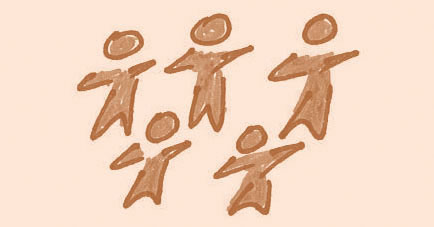

Principles
• Begin with peoples’ life experiences
• Everybody has knowledge; everybody brings something
to the table
• Popular education is a cooperative study; learning happens among the people

Tips
• Popular education is a process; not training courses
or workshops
• Consider that there are different interpretations and approaches for practicing popular education
• Trust the process and the people involved in it
• Dinamicas are important and useful, but are not the ultimate goal

References
• The Theory Behind Our Work brochure
• How to Facilitate the Popular Education Process Tool
• How to Engage in the Popular Education Process Tool
• PVI Ground Values and Principles
Using Problem-Posing Materials
in Popular Education
Problem-posing is a central approach for facilitating popular education. This method helps participants analyze a situation from its root cause, and most importantly, to find solutions to a social issue impacting the collective.
Problem-posing materials should:
• reflect the community’s most important issues
• raise questions about familiar situations in participants’ own lives
• focus on only one theme so that the discussion can center on that
• be clear and visible with minimal distracting details
• stimulate them to think of different possibilities
• help participants discover more about themselves
• stimulate interest and touch the hearts of participants
Facilitating a discussion can include:
• presenting problem-posing material: a reading, a picture, a play, a story, a video like “In Search of a Future” or “From Our Roots.”
• leading the group discussion into problematizing the material by asking the following questions:
1. Describe the scene: What is going on in this picture, story, play, film?
2. First analysis: Why is this happening?
3. Associate it to their lives: Does this happen in your situation?
4. Associate it to related problems: What problems can this lead to?
5. Root causes: What are the root causes of this problem?
6. Action planning: What can we do about it?
• doing an activity based on “listening” to the above questions like designing a code or problem posing material you can use as a cultural organizer.
• share with the group and attempt to facilitate a dialogue around your code or problem posing material. The dialogue can center around the six discussion questions.
“Problem-posing education affirms men and women as beings in the process of becoming.”
Pablo Freire


Principles
• Popular education is a consciousness building process that implies learning, knowledge, development for action, reflection about the process, and planning for next steps

Tips
• If you show a video, select a clip that will spark dialogue
• In selecting problem posing materials, particularly videos or photos, be sensitive to who is in the room as sensitive material can trigger painful memories

References
• The Theory Behind Our Work brochure
• Who to Engage in the Popular Education Process Tool
• When to Engage People in Popular Education Tool
The Practitioner’s Role in Popular Education
The popular education practitioner is responsible for finding methods of reading and evaluating a group. It’s extremely important for the practitioner to be aware of how he or she is reacting to individuals and to find ways to attune to the collective educational needs of the learning group. A popular education practitioner has a strong belief that people most affected by injustice must play a central role in rebalancing power relationships.
The role of the popular education facilitator or cultural organizer role is to:
• help the participants ‘unveil’ their situation
• encourage discussion, but limit their own input
• ask questions that draw people out and touch on issues they care about
• summarize what the group is saying and feeling, when necessary
• build on the contributions of participants
• use leadership skills to draw out shy people and prevent talkative ones from dominating
• have a deep understanding of popular education principles and the ability to put those principles to work
• offer opportunities for people to validate their own knowledge
• ensure people take ownership of the learning process and trust their capacity to determine problem-solving actions and solutions
• create an environment where people value and share the personal knowledge they have accumulated through their life experiences, but also value the knowledge of others
• create opportunities for people to discover that what has been learned in the process is not intended solely to accumulate knowledge, but rather to reach collective solutions and take action for transforming social conditions of injustice and oppression
• ensure that learning is an ongoing process that carries into everyday life and continues outside learning group gatherings
• create an atmosphere of trust and respect that allows a collective learning process in which all participate without domination by those who think they know more than their peers
• facilitate a process in which people with different ethnic, cultural and religious backgrounds recognize their differences and find a mutual understanding and common ground that can help build community cohesiveness
“A popular educator facilitates peoples’ learning, helps people learn to stand up for their rights, becomes empowered they themselves.”
Miles Horton
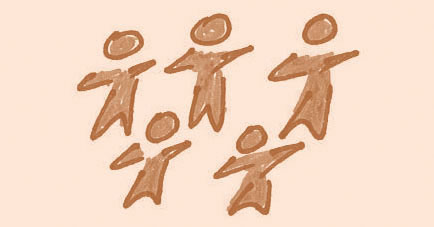

Principles
• Learners participate in determining what is to be learned
• People are active subjects, not objects
• All people – with or without formal education – have the ability to articulate and think
• Avoid assumptions about what you think people want to learn
• People are motivated to organize in order to change issues relevant to them

Tips
• See list of tips indicated in the tool

References
• The Theory Behind Our Work brochure
• Popular education tools regarding indigenous Mexicans, youth and mixed families
• Building a Sense of Belonging Tool
• Decolonization Tool
Implementing Dinámicas Participativas (Participatory Dynamics)
Around the world, popular education practitioners have developed a set of dinamicas1 creative and participatory learning techniques) for facilitating popular education processes. In this toolbox, we share some of the dinamicas we have used that have been effective in our work. It is important to understand that these techniques are tools used in the popular education process, yet they are not at the core of what popular education is. Popular education is guided by principles; it is a democratic pedagogy, and techniques are tools that support those principles in practice.
Dinamicas are used to stimulate and generate awareness of situations and facts. They also provide information on how participants understand these situations and facts that are shared with other participants in the form of “codes.” The “decoding” is carried out in groups in a process of using their own knowledge to interpret, analyze and make deductions about the subject or situation that has been presented. This process should not be seen as a game or amusement. Practitioners should adapt the dinamicas as needed in order to best apply them to the group and desired objective.2
Example of dinamicas participativas:
The Weather BallBy
Puanani Burgess
This simple activity is useful to initiate a quick emotional “temperature” check of group members. It is beneficial for a group whose members don’t know each other well or that hasn’t been together in awhile.
Using an object that symbolizes a weather ball, participants are asked to answer this question: What is the weather inside you today? Each person in the group shares while passing the object from person to person.
“Popular education is not a set of trainings or technics; rather, it’s a process that engages participants in expressing their voices, sharing knowledge and exercising their analytical thinking of an oppressive and unjust social reality with the ultimate intention to act towards changing that reality.”
Myrna Martinez N
1 We chose to use the word dinamicas to differentiate these activities from ice breakers
2 Nydia Gonzalez Rodriguez, Ana Rosa Padron Echeverria, Algeria Fernandez Diaz, Angela Mendoza Cabrera, Teresita Z. Vega Costa. Participatory Techniques and Didactic Games of Cuban Educators.Havana City, Cuba: Collective from Research Educational Ion 3 “Graciela Bustillo” Educational Project of the Association of Padagogos of Cuba, 1999
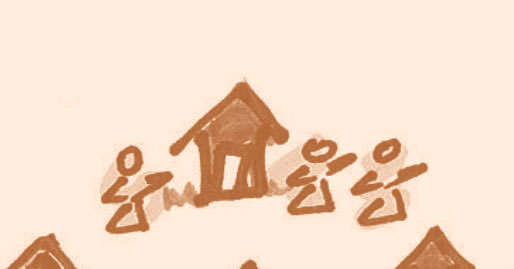

Principles
• All people – with or without formal education – have the ability to articulate and think

Tips
• Dinamicas are not ice breakers; they are learning activities
• Dinamicas should be related to the issue or topic to be addressed
• Be mindful of the cultures and ages of participants
• Dinamicas are not games, but activities that spark reflection

References
• The Theory Behind Our Work booklet
• Popular education tools regarding indigenous Mexicans, youth and mixed families
Dinamicas Participativas (Participatory Dynamics)
The Tree of Life Learning Activity
This learning activity has been very effective in our work because of its simplicity and adaptability. We have used it to stimulate story telling from the individual to the collective.
Example of dinamicas participativas:
The Tree of Life
Starting with Ourselves
An excerpt from “Training for Transformation in Practice”
By Anne Hope and Sally Timmel
Instructions: 3 minutes
Create a Tree of Life to reflect on your own perspectives and experiences. Provide only information you want to share at this time with a group of people you meet for the first time.
Consider the questions below: 40 minutes
The Roots
• The family from which you come
• Strong influences which have shaped you into the person you are now
The Trunk
• What gives you strength?
• What are the main ideas or realizations that guide your life and work?
The Leaves
• What are the injustices or experiences you find yourself observing or living?
• What are the main events and experiences that shaped your life so far?
The Fruits
• Have you ever taken a stand on an important issue?
• Projects you have organized
• Groups you have started or helped to develop
The Buds
• Represent your achievements, your hopes for the future
Discussion: Each participant shares for 10 minutes
1 Nydia Gonzalez Rodriguez, Ana Rosa Padron Echeverria, Algeria Fernandez Diaz, Angela Mendoza Cabrera, Teresita Z. Vega Costa. Participatory Techniques and Didactic Games of Cuban Educators.Havana City, Cuba: Collective from Research Educational Ion 3 “Graciela Bustillo” Educational Project of the Association of Padagogos of Cuba, 1999
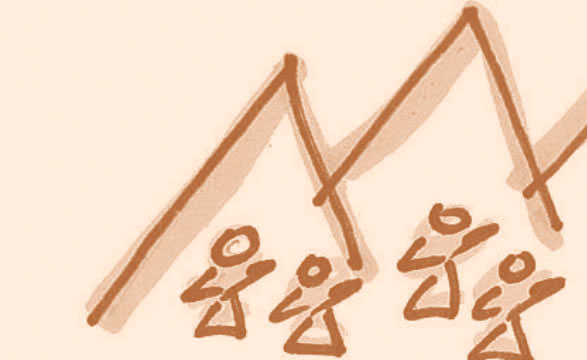

Principles
• Start with peoples’ life experiences and contextual connection to where they live, their history, culture, world vision and perspectives for change

Tips
These techniques are not applied in a mechanical way; you always have to account for:
• characteristics of the group
• who are your participants?
• time available to achieve objectives
• environment in which you will be working
Objectives, subject, intensity 1

References
• The Theory Behind Our Work booklet
• Dinamicas Participativas Tool
